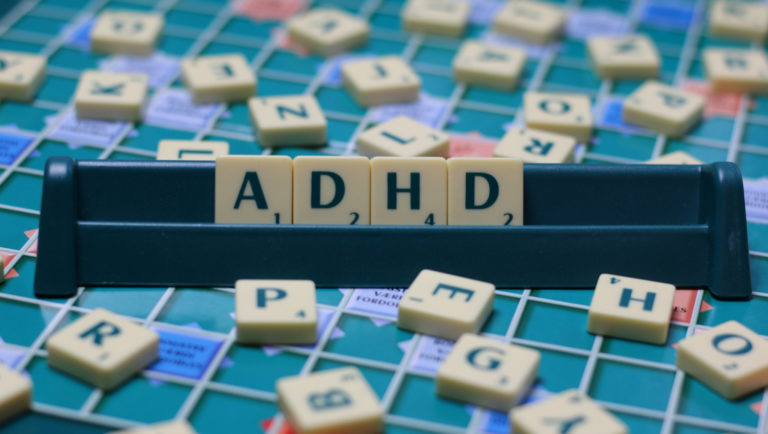Hallucinations Reported as Side Effect of ADHD Medication
報導稱,ADHD 藥物可能引發幻覺副作用
By Peter Simons – September 4, 2018
彼得·西蒙斯 撰 – 2018 年 9 月 4 日
根據發表於《斯堪的納維亞兒童與青少年精神病學與心理學雜誌》的最新研究,哌甲酯(利他林)治療 ADHD 後報告出現了幻覺和其他精神病症狀。該研究由丹麥斯萊厄瑟勒地區精神病研究中心的埃麗卡·拉姆斯塔德(Erica Ramstad)領導。
一份此前由美國食品藥品監督管理局(FDA)發布的報告,專注於藥物公司贊助的興奮劑試驗。該報告指出,這些試驗存在高偏見風險(包括對不良反應的低報告率)。即使在這份報告中,研究也指出,服用哌甲酯的兒童中出現精神病症狀的現象相當普遍,而安慰劑組中完全沒有這些症狀。
本研究包括了兩項 Cochrane 系統性綜合分析——一項專注於隨機臨床試驗(RCTs),另一項則包括觀察性研究和非安慰劑對照試驗的報告。Cochrane 系統性綜合分析旨在納入所有可用數據,而不僅限於藥企支持的試驗,並對偏見風險進行評估。
本次分析綜合了 10 項隨機對照試驗、17 項非隨機研究和 12 份患者報告,總共涵蓋了 77,358 名患者。大部分患者來自非隨機研究。只有少數哌甲酯的研究評估了精神病症狀,因此該研究基於那些包含此類數據的試驗。
由於非隨機研究只涉及服藥的兒童,因此無法確定藥物是否引發了這些症狀。然而,這些研究可用於估計症狀的發生率。研究顯示,開始服用哌甲酯的兒童中,大約 1%-2% 的人報告出現精神病症狀,這被視為藥物的副作用。
另一方面,隨機對照試驗可用於將服用藥物的兒童與隨機分配至安慰劑組的兒童進行比較。對這些研究的分析顯示,服用哌甲酯的兒童出現精神病症狀的可能性是服用安慰劑兒童的兩倍多(風險比 2.07)。雖然由於隨機對照試驗的樣本量較小,該結果未達到統計學顯著性,但這支持了非隨機研究中的發現,即服藥兒童更有可能因藥物產生精神病症狀。
案例研究為哌甲酯服用者的精神病症狀提供了更多信息。最常見的精神病症狀是幻覺(聽覺、視覺和觸覺)。這些幻覺通常在孩子服藥後 1 小時至 1 天內出現。在所有 16 例中,停止服藥後精神病症狀消失。在其中 4 例中,孩子再次服用藥物,其中一半的病例中,精神病症狀立即復發。一名患者在三年後的隨訪中仍在服用哌甲酯,並由於持續的精神病症狀被診斷為精神分裂症。
儘管興奮劑藥物(包括哌甲酯和安非他命)被視為兒童 ADHD 的一線治療藥物,研究人員對這些藥物的有效性和兒童長期服用的危險性提出了許多質疑。事實上,長期研究發現,服用興奮劑的兒童的結果與未服用藥物的 ADHD 兒童相同,甚至更差。
此前一項由部分本次研究的研究人員領導的 Cochrane 評價指出,哌甲酯的有效性證據“質量非常低”,並表示大多數研究存在“高偏見風險、不精確性、間接性、異質性和出版偏見”。根據這些報告,儘管教師報告稱,興奮劑藥物可能略微改善孩子在課堂上的行為,但考慮到所納入研究中的高偏見風險,這些發現應該謹慎對待。
由於所有哌甲酯研究中的隨機對照試驗都存在高偏見風險和方法問題,本次研究的作者表示,無法確定精神病症狀是否為哌甲酯治療的副作用。他們建議未來的研究應更好地評估精神病症狀,並採用更嚴謹和偏見更少的研究設計。
Ramstad, E., Storebø, O. J., Gerner, T., Krogh, H. B., Holmskov, M., Magnusson, F. L. . . . Simonsen, E. (2018). Hallucinations and other psychotic symptoms in response to methylphenidate in children and adolescents with attention-deficit/hyperactivity disorder: A Cochrane systematic review with meta-analysis and trial sequential analysis. Scandinavian Journal of Child and Adolescent Psychiatry and Psychology, 6(1). doi: 10.21307/sjcapp-2018-003 (Link)
文章來源:https://www.madinamerica.com/2018/09/hallucinations-reported-side-effect-adhd-medication/
Hallucinations and other psychotic symptoms have been reported after methylphenidate (Ritalin) treatment for ADHD, according to a new study published in the Scandinavian Journal of Child and Adolescent Psychiatry and Psychology. Erica Ramstad led the research at the Psychiatric Research Unit, Region Zealand, Slagelse, Denmark.
A previous FDA report exclusively focused on published, pharmaceutical-industry-sponsored trials of stimulants, which the authors note were at high risk of bias (including under-reporting of adverse effects). Even this report noted the prevalence of psychotic symptoms among children taking methylphenidate and the complete absence of these symptoms in the placebo group.
The current study consisted of two Cochrane systematic meta-analyses—one focused on randomized clinical trials (RCTs), and the other including observational studies and reports from non-placebo-controlled trials. Cochrane systematic meta-analyses are designed to include all available data, not just industry-supported trials, and add a method for rating the risk of bias.
The current analysis synthesized the data from 10 RCTs, 17 non-randomized studies, and 12 patient reports, for a total of 77,358 included patients. Most of the patients were in the non-randomized studies. Very few of the published studies on methylphenidate assessed for psychotic symptoms, so this research is based on those studies that did include this data.
Because the non-randomized studies only involve children taking the drug, there is no way to judge whether the drug caused the effect. Nonetheless, these studies can be used to estimate the prevalence of a symptom, and from these studies, the researchers found that approximately 1%-2% of children who began taking methylphenidate then experienced psychotic symptoms as a reported adverse effect of the drug.
The RCTs, on the other hand, can be used to compare children taking the drug to children who were randomly assigned to a placebo. An analysis of these studies found that children on methylphenidate were more than twice as likely (risk ratio 2.07) to develop psychotic symptoms than children on placebo. Although this finding did not reach statistical significance, due to the small sample size in the RCTs (statistically, it could have been due to chance), it supports the idea that the children in the non-randomized studies were more likely to experience psychotic symptoms because of the drug.
The case studies provide information about how psychotic symptoms appear for children taking methylphenidate. Hallucinations (auditory, visual, and tactile) were the most common psychotic symptom. The hallucinations happened between 1 hour and 1 day after the children received methylphenidate. In all 16 cases, stopping the drug also stopped the psychotic symptoms. In four cases, children were then put back on the drug—in half of those cases, the psychotic symptoms immediately came back as well. One patient, at 3-year follow-up, was still taking methylphenidate and had received an additional diagnosis of schizophrenia due to continuing psychotic symptoms.
Although stimulant medications (including methylphenidate and amphetamines) are considered first-line interventions for ADHD in children, researchers have raised numerous concerns about the effectiveness of these drugs and of the long-term dangers of children taking these drugs. In fact, long-term research has found that children who took stimulant medications either have the same results or worse results than children with ADHD who did not take stimulants.
A previous Cochrane review of the effectiveness of methylphenidate, led by some of the researchers from the current study, described the evidence of effectiveness as “very low quality” and stated that most of the studies were at “high risk of bias, imprecision, indirectness, heterogeneity and publication bias.” It appears, from these reports, that stimulants may slightly improve children’s behavior in the classroom, according to their teachers’ reports, but that any such finding should be taken with a grain of salt considering the high risk of bias in the included studies.
Because of the high risk of bias and methodological problems plaguing all the RCTs that studied methylphenidate, the authors of the current study reported that they could not say for certain that psychotic symptoms are an adverse effect of methylphenidate treatment. They suggest that future research needs to better assess for psychotic symptoms and include more rigorous, less-biased study design.
****
Ramstad, E., Storebø, O. J., Gerner, T., Krogh, H. B., Holmskov, M., Magnusson, F. L. . . . Simonsen, E. (2018). Hallucinations and other psychotic symptoms in response to methylphenidate in children and adolescents with attention-deficit/hyperactivity disorder: A Cochrane systematic review with meta-analysis and trial sequential analysis. Scandinavian Journal of Child and Adolescent Psychiatry and Psychology, 6(1). doi: 10.21307/sjcapp-2018-003 (Link)
